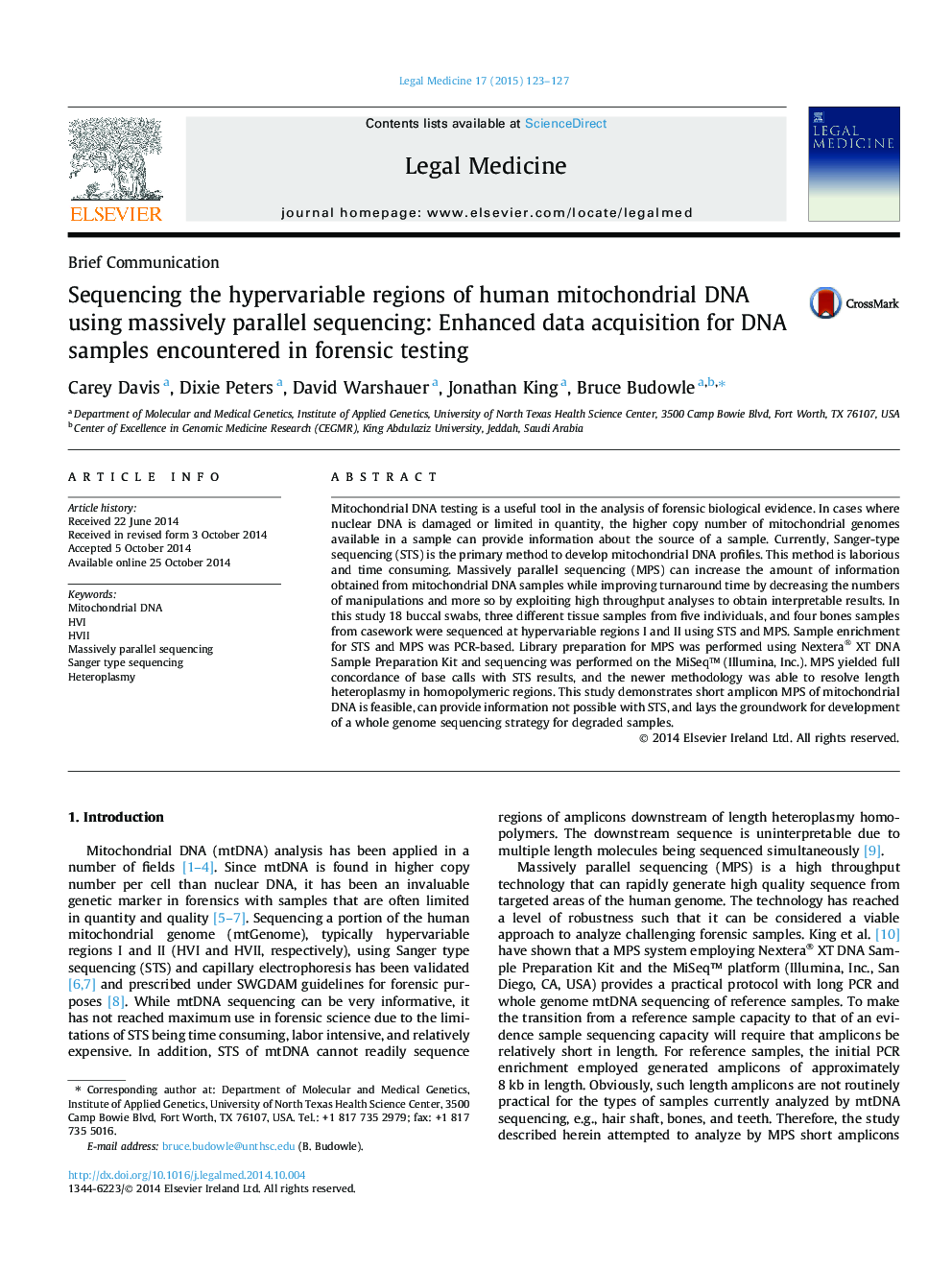| Article ID | Journal | Published Year | Pages | File Type |
|---|---|---|---|---|
| 103499 | Legal Medicine | 2015 | 5 Pages |
•Massively parallel sequencing provides concordant results with Sanger sequencing on forensic type samples.•With different sequencing chemistry and high depth of coverage length heteroplasmy variants can be resolved.•Short amplicons can be sequenced laying the support for future development of a multiplex short amplicon panel for mitochondrial DNA sequencing.
Mitochondrial DNA testing is a useful tool in the analysis of forensic biological evidence. In cases where nuclear DNA is damaged or limited in quantity, the higher copy number of mitochondrial genomes available in a sample can provide information about the source of a sample. Currently, Sanger-type sequencing (STS) is the primary method to develop mitochondrial DNA profiles. This method is laborious and time consuming. Massively parallel sequencing (MPS) can increase the amount of information obtained from mitochondrial DNA samples while improving turnaround time by decreasing the numbers of manipulations and more so by exploiting high throughput analyses to obtain interpretable results. In this study 18 buccal swabs, three different tissue samples from five individuals, and four bones samples from casework were sequenced at hypervariable regions I and II using STS and MPS. Sample enrichment for STS and MPS was PCR-based. Library preparation for MPS was performed using Nextera® XT DNA Sample Preparation Kit and sequencing was performed on the MiSeq™ (Illumina, Inc.). MPS yielded full concordance of base calls with STS results, and the newer methodology was able to resolve length heteroplasmy in homopolymeric regions. This study demonstrates short amplicon MPS of mitochondrial DNA is feasible, can provide information not possible with STS, and lays the groundwork for development of a whole genome sequencing strategy for degraded samples.
